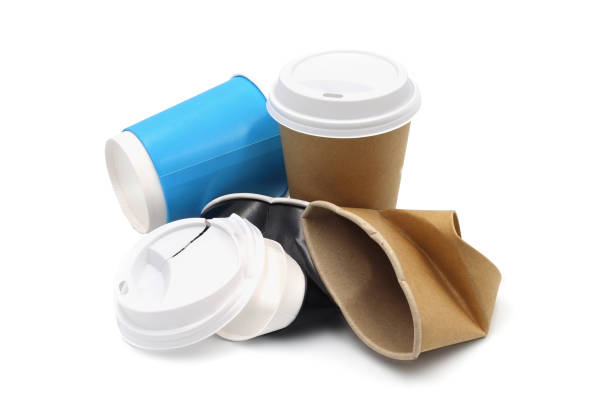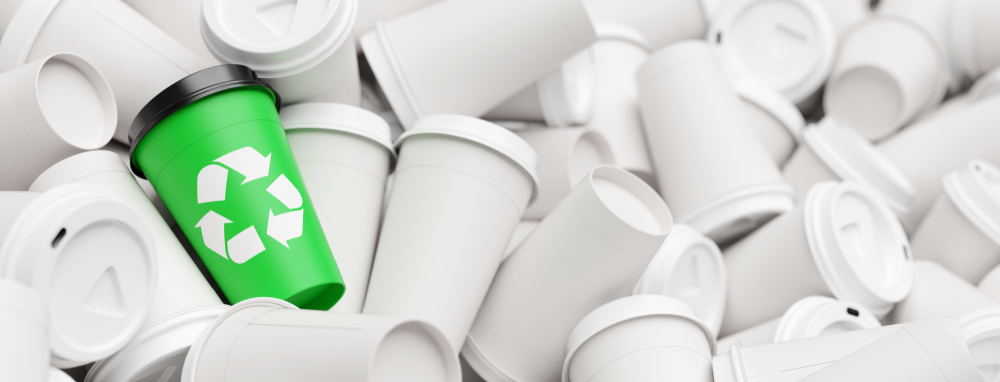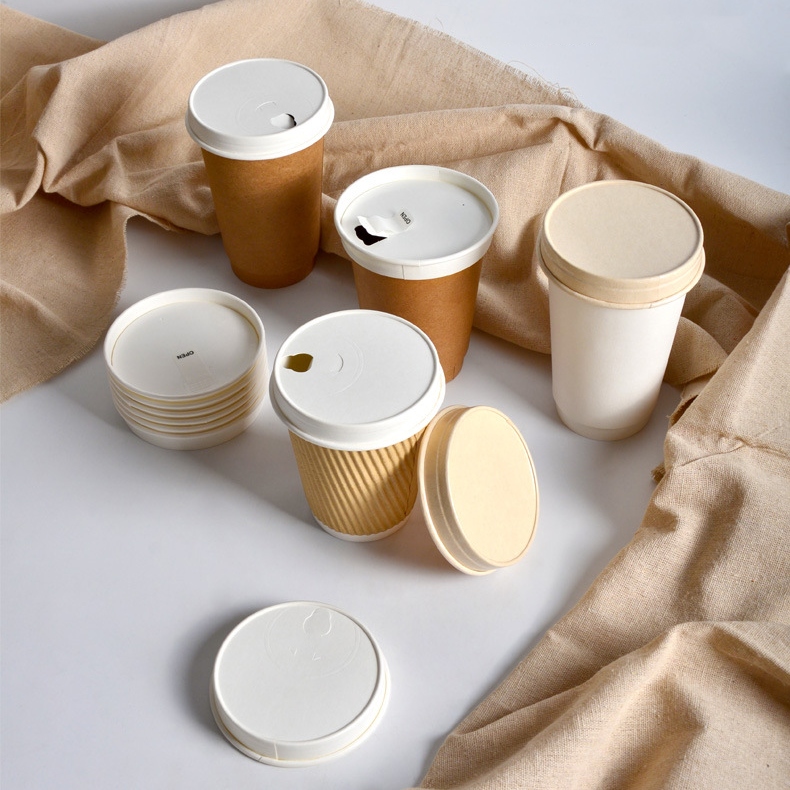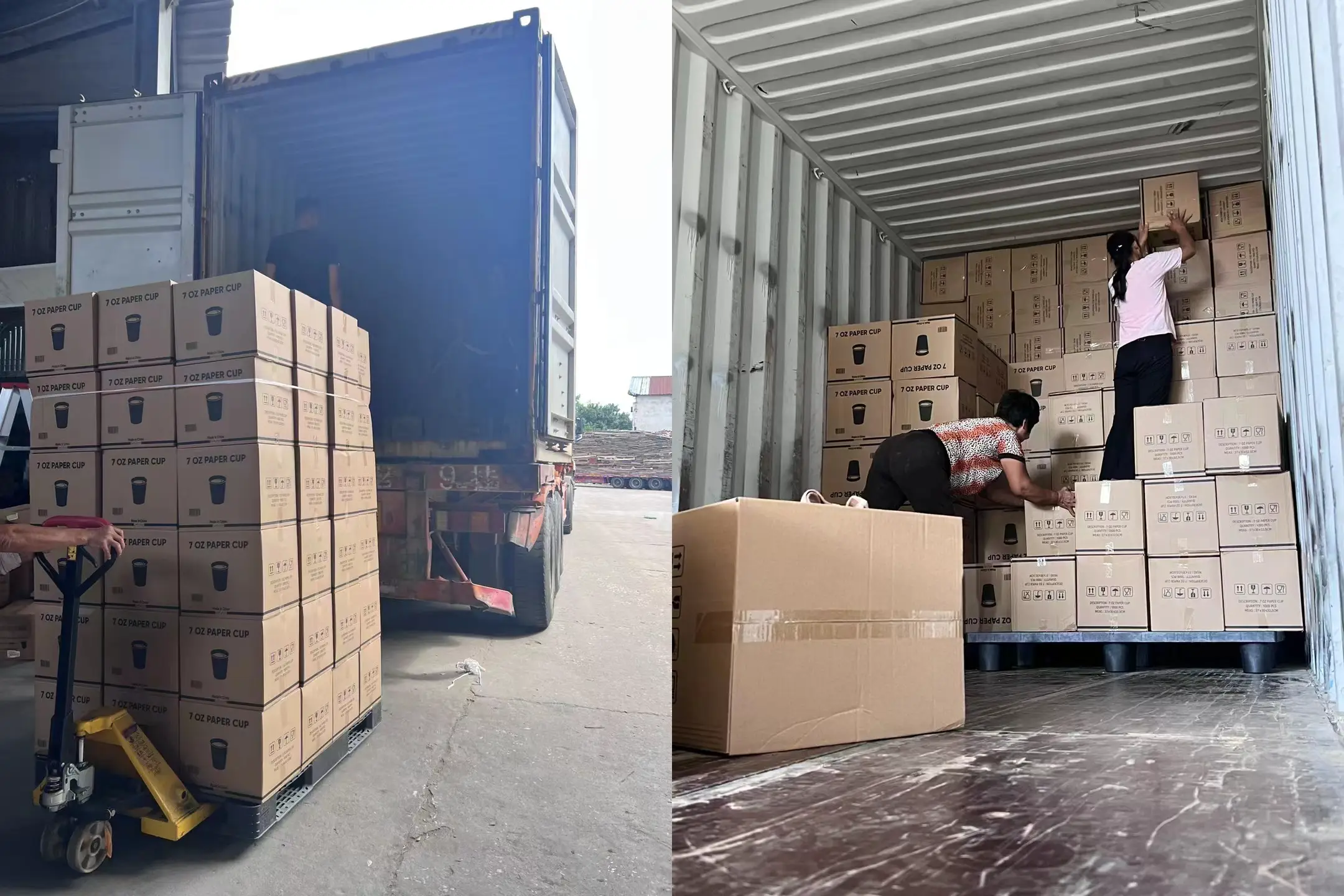Unless you’re one of those underachiever types who bring a travel mug to the coffee shop every day, you’re probably getting your caffeine fix in paper cups. You most likely drank from a takeout cup this morning.
If that’s the case, you’re not alone. By the end of the day, more than 136 million Americans will have used a paper coffee cup, and more than 50 billion cups will have been used by the end of the year. Another 50 billion will be added next year, and so on.
That is a large number of cups. More importantly, that’s a lot of waste. And, contrary to popular belief, coffee cups are not widely recyclable – at least not in North America. (In their defense, inaccurate labels are everywhere, including on the cups themselves). Unfortunately, once used, paper cups degrade into the garbage that accumulates in our landfills by the hundreds of billions.

The reason, not all paper cups aren’t recyclable
Paper cups are made up of two basic components: paper and polyethylene. The polyethylene liner, which accounts for only 5% of the entire container, is what brings the muscle – the liquid barrier that keeps heat in and prevents the cup from becoming soggy – but it’s also a contaminant in the paper waste stream.
Notice
Estimates from the paper and recycling sectors suggest that between 600,000 and 800,000 tons of post-consumer single-use paper cups are used each year in the U.S. and Canada combined.
During the re-pulping process, most contaminants can be removed, and paper mills can easily filter out unwanted substances such as dirt, dyes, and other residues. The plastic liner differs from other contaminants in that it disintegrates into large flakes that pass through coarse pulping screens and clog the fine screens. Because filter clogs are so damaging to the equipment, most paper mills automatically send the cups to landfill.

We sent a man to the moon, but we can’t handle a few clogs?
It’s not that recycling paper cups is impossible; it certainly is. The technology is available. In fact, two Material Recycling Facilities (MRF) in the United Kingdom are capable of doing so. It’s also not for a lack of desire to change.
“For a long time, brand owners have been under pressure from increasingly eco-conscious consumers to improve their environmental stewardship,” said Katherine Grisson, Industry Marketing Manager for Printing, Packaging, and Adhesives at BASF. “I’ve spoken with several brand owners who are actively attempting to address this issue.”
Just ask Starbucks: “We are working to shrink our environmental footprint and meet our customers’ expectations by reducing waste associated with our business, increasing recycling, and promoting reusable cups.”

What is the issue? Recycling is a complicated process that goes beyond technical ability. There’s the issue of accountability, for example. Who pays for material or mechanical upgrades if cups must be made differently? Who pays for the necessary equipment to be retrofitted into MRFs? Who ensures that cups are properly sorted and delivered to the correct MRF in each municipality?
“Consumers and taxpayers do not believe they should be footing the bill; they believe it is the brand owners’ responsibility,” Grisson added. However, because brand owners are specialists in coffee, not cups, they turn to their cup suppliers to solve the problem. These suppliers pass the baton to their converters, who pass it on to their ink formulators, and so on.
Everyone in the value chain is under stress, but stress does not pay the bills.

Designing for consumer preferences as well as industry realities
Surprisingly, the same consumers who demand sustainability appear unwilling to forego their own convenience for the sake of the cause. Just ask the coffee shops that provide incentives to demonstrate their commitment to reducing waste. “Starbucks has implemented a program where customers can save 10 cents every time they bring in their own mug,” Grisson explained, but only about 2% of customers take advantage of the offer.
“What we can take from this is that people still want paper cups, so the solution can’t venture too far outside the box. Designers face difficult constraints: paper cups must be recyclable, but they must also be affordable, work within existing infrastructure, and meet performance standards.”
Unsurprisingly, the industry has had difficulty locating such a cup. Several companies will claim that salvation has arrived, but it appears that one criterion is always off.
Consider polylactic acid (PLA) liners, which are made from compostable plant-based resins. Composting appears to be a better solution than recycling on the surface. In practice, however, not only is PLA more expensive, but most retail locations are also not equipped to compost.
“Unless the PLA-lined cup ends up in a controlled compost facility, it will pollute like any other non-biodegradable cup,” Grisson added. “And, like PE-coated cups, it is not a desired recyclable by the paper industry. As a result, what appears to be a great idea isn’t always feasible for most brands.”
Another strategy gaining traction is one that employs the same PE liner but applies it differently, by lightly gluing it onto the fiber rather than extruding it. The concept is sound, but it assumes that MRFs have the necessary equipment to properly process the cups. If they don’t, it’s the same as attempting to recycle existing cups on the market.
The problem always seems to be buried in the liner, no matter how advanced the design.
“One could argue that if cups were made of a single material, then they could simply be sorted with other paper in the MRF,” says the Paper Cup Recovery and Recycling Group (PCRRG) in the United Kingdom. However, no such pure single material cup exists because the cup must be able to safely hold a hot drink without becoming soggy or leaking?”
The PCRRG is both right and wrong.
Water-based polymers: Fighting liquid with liquid
“The two-part cup model is a problem,” Grisson explained. “However, thanks to new polymers, there is now a solution that combines paper and performance. BASF discovered the solution in water-based polymers.”
About Water-base paper cup
Paperboard does not have a natural barrier against grease, oil, water vapour or water but these barrier properties are sometimes needed to be put in place. For paperboard, the most common barrier is polyethylene (PE), applied with an extrusion process. A water-based barrier coating (WBBC) is a more sustainable way to create a plastic-free barrier on to the paperboard
Water based coated paper cup is the future!
Because of its non-plastic nature,it can be composted in an industrial compost facility for only 12 weeks,also recyclable and repulpable without any additional treatment or process.
A water-based barrier coating (WBBC) is a more sustainable way to create a plastic-free barrier on to the paperboard. WBBC is an aqueous dispersion coating that is applied to the surface of the board to form a solid barrier film. These coatings can be applied to the board on-line or off- line.
This is how it works:
“The polymer acts as a heat-sealable, block-resistant liquid barrier,” Grisson explained. “It performs like polyethylene, so the cup still does what it needs to do, but it can be sorted with regular paper at the end.” The innovative water-based technology has no effect on the paper repulping process. There are no other contaminants to separate; only valuable paper is returned to the material stream.

“It’s a practical alternative for formulators and converters because no additional equipment is required,” she concluded. “It is applied during the converting process at comparable cost-in-use pricing; they can use their existing gravure printing or rod coating processes. It also eliminates the need for extrusion or liner gluing in polyethylene coated cups.”
With water-based-polymer technology on the horizon, it’s only a matter of time before landfill-bound paper cups – frozen yogurt cups, and takeout noodle containers – now become the memory of the past.
Application Of Water-Based Barrier Coating Paper?
Water-based barrier-coating paper products have a variety of applications, but they are most commonly used in the food industry to create disposable food packaging.
WBBC is chemically inert and has no effect on the taste or odor of the contents of its packaging. These characteristics make WBBC coating ideal for use in the food industry.
The FDA and other governmental agencies have cleared the majority of the individual elements used to make WBBC for direct food contact. Some of the most common WBBC applications are listed below:
- Disposable coffee paper cups
- Ice cream tub
- Microwavable food packaging
- Disposable folding box
- Disposable food containers
- Disposable food serving trays
- Food wrappers
- Disposable paper tableware
- Paper pads
- Disposable dairy packaging
- Disposable meat packaging
- Cheese packaging
- Any other food packaging requirement that requires high oil and grease resistance properties

Advantages Of WBBC Paper
WBBC paper products have a strong suit in terms of advantages because they can fill the gaps in the feature portfolios of most other paper coating agents. Here are some of the most significant benefits of WBBC.
100% Plastic-Free
Today, everyone understands that plastic is bad for the environment, and everyone wants to make a change and replace plastic with other products, but doing so is difficult.
Even though we are not yet in a position to completely replace and remove plastic from the environment, the use of WBBC can ensure that customers can stop using plastic in the food packaging industry.
WBBC ensures that the eco-friendly packaging that comes with your favorite takeout food is truly sustainable and environmentally friendly.

Reduce your reliance on pe-coating paper.
To this day, most PE-coated paper products are treated as single-use items because they are not recycled in the majority of cases due to the factors discussed in this article.
As a result, valuable plant fibers are wasted after a single use, despite the fact that they could be recycled without being coated with PE.
As a consequence, WBBC reduces single-use packaging because it is truly recyclable, and the paper can be reused to make other products, making WBBC sustainable.
Easy to Recyclable
WBBC is a recyclable material. That is not surprising after reading this article. However, you should be aware of the far-reaching consequences of WBBC’s recyclability. Consider the most commonly used coated paper products.
Paper cups are one of the solutions. WBBC coated cups are recyclable. Because these cups are recyclable, cafes and other institutions can save a lot of money on waste costs. Saving money encourages businesses to promote recycling, which helps WBBC products be more purposeful.
Disadvantages Of WBBC Paper
High cost paid
WBBC is currently the buzzword in the packaging industry, and for good reason: the benefits of WBBC can genuinely help move the packaging industry in a more sustainable direction.
However, the product is still in its early stages. Customers are wary of trying a new product. WBBC paper, on the other hand, is more expensive than PE&PLA coating paper.
Recycling Plants Education
Yes, recycling plants must be made aware of the new WBBC coated products and their recyclable nature.
Most coated paper products have been indiscriminately discarded by recycling plants over the years because they are not recyclable. As a result, informing them about these new products is critical to ensuring that they are recycled.
Bottom Line
Awareness among recyclers, consumers, and businesses can truly assist WBBC in reaching its full potential and effecting meaningful change.
It has some of the best benefits in terms of paper coating agents, and it is expected that public awareness alone will help it achieve the following paper coating agent standard.
So, spread the word about WBBC to everyone you know, and take a moment to ask businesses what containers they use to serve you your favorite food.
Companies will be incentivized to make a meaningful shift toward eco-friendly and sustainable products as a result of your interest and diligence, so make sure you use your voice when it matters for a better world tomorrow.








One Response